See, in my conversations with her about clothes, she occasionally expresses her frustration with how RTW doesn't fit, and how frustrating it is to find clothes that make her feel good. Of course, my sister is beautiful, and if her clothes make her feel otherwise, it's their problem, not hers! There's no reason for a gorgeous woman to feel dumpy when she gets dressed! * Home sewists sometimes call this basic body-fitting garment a "sloper", but that's ambiguous, because in manufacturing a sloper is any pattern without seam allowances. Though I'm not manufacturing, I'd hate to contribute to confusion about terminology. I believe "block" is a better term for what I'm making, since a block is a basic garment pattern, which other patterns for specific garments are built off of. HER BODY My sister has one shoulder higher than the other, from playing the violin. She has one hip very slightly higher than the other, from mild scoliosis. Her frame is an inverted triangle (wider shoulders than hips). Her bust is asymmetrical, but not obviously. Her posture is interesting: significant inward curve in the small of her back and a hips-back-chest-forward stance. I don't think it's swayback, since I think swayback is associated with a hips-forward stance. Maybe anterior pelvic tilt? I'm no expert on the spine; I just Google-diagnose! At any rate, she's always stood like that: her waist is high and tilted up in the back; her back is small and short. All of these details, listed this way, sound unusual, but in reality, we are each a collection of strange details and exceptions to the "norm". Life writes stories on our bodies; my sister's body is perfectly normal in its abnormality. RTW FIT ISSUES When my sister buys tops that fit her shoulders and bust, they are always too baggy in the back and hips. (Commercial patterns seem to think if you have a larger bust you must be larger all over.) When they fit her back, they pull too tight across the bust. Naturally, my sister is fond of dresses with a bit of stretch because they seem to fit better, but even then, the shortness of her back causes center-back zippers to buckle outward just where her spine curves in. Her go-to tops for daily wear are lightweight knit: lightweight so the fullness in the back doesn't add bulk and knit because it stretches. (Paris Ciel's site has unusually good tips on dressing the broad-shouldered figure, though couched in sometimes negative language about "fixing" figure faults.) BLOCK #1The first block is simply draped and pinned on her body. I've done this only once before, to develop a pattern for a gown for her last year, so I'm a beginner.
The front is trickier, because I find bosom harder to fit than back. That could be because all the historical gowns I've done focus on the back view... the diamond-back of the Regency period, the Victorian fan back. And my own bust is closer to what pattern companies call standard, so I've never had to fuss much with the fronts of my patterns I make for myself! (The exception is if I work from a Misses' pattern, in which case I have to move the dart to lower the apex of the bust. I am not a teenager anymore!) It doesn't help that I keep making my sister laugh, and her belly button dances around, and the front shifts... I re-pin the princess seams in the front several times. WHY PRINCESS SEAMS? Given that princess seams aren't my favorite look for my sister*, why do I chose to make the block with them? Simply put, because I understand how to turn princess seams into darts much better than vice versa. I mean: I've done dart manipulation both ways, but when turning a dart into a princess seam, you're kind of guessing about the curve over the bust point, because good darts don't go all the way to the point of the bust. But princess seams show the curve and the point of the bust, so you can make darts from them with no guesswork. I want a block that is versatile. * I know princess seams create vertical lines, which ought to be good for her, but because her pelvic tilt thrusts her top forward, I feel like the hips disappear and she starts looking like the Dowager Countess Grantham. Come to think of it, I'll bet my sister could rock some Edwardian S-bend corset styles, just with her natural body type. Hmmm...
LESSONS LEARNED Why oh why did I start pinning the princess seams before doing the side seams? If I'd done it the other way I could have saved myself trouble and piecing and off-graininess at the underarm area. And next time I should thoroughly iron the fabric first and mark grain and cross-grain with pen so I can see it while I'm working! FINAL THOUGHTS Many thanks for my sister for standing still while I fussed and pinned and learned, and especially for consenting to the online publication of these photos. She finds them unflattering (oatmeal is not her color, and this fits snugger than clothes do), but she is a trouper! Sister mine, I'll make it up to you with pretty clothes! Block #2 on Thursday, March 30th!
2 Comments
The Sister
3/24/2017 12:30:56 pm
Oh my, these ARE flattering pictures of me, aren't they? I think I'll put them on my Christmas card. I find it amusing that you didn't show any side views to demonstrate my funky spine and your pattern corrections to minimize it, but yes, I probably could rock the S-bend Victorian look.
Reply
Leave a Reply. |
Karen Roy
Quilting, dressmaking, and history plied with the needle... Sites I EnjoyThe Quilt Index Categories
All
Archives
March 2024
|
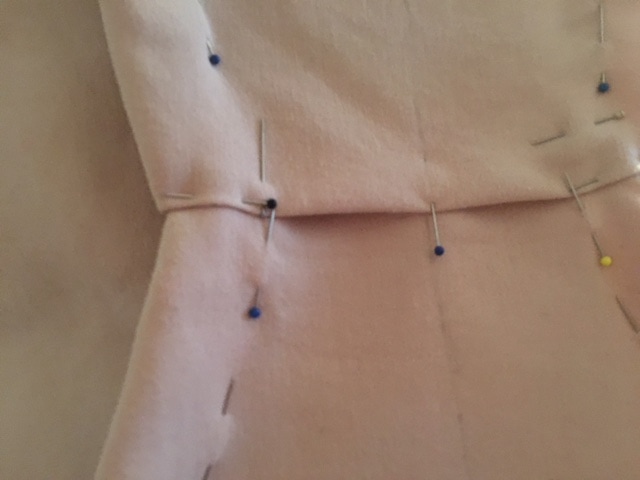
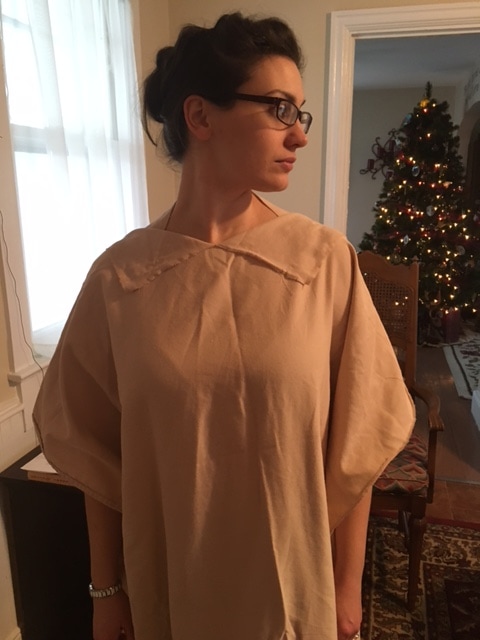

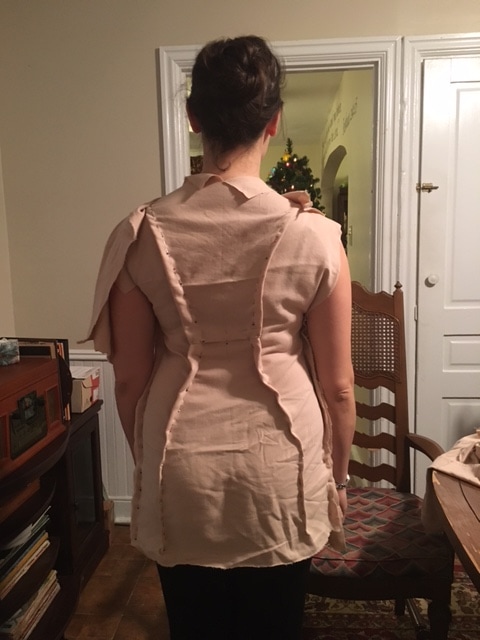
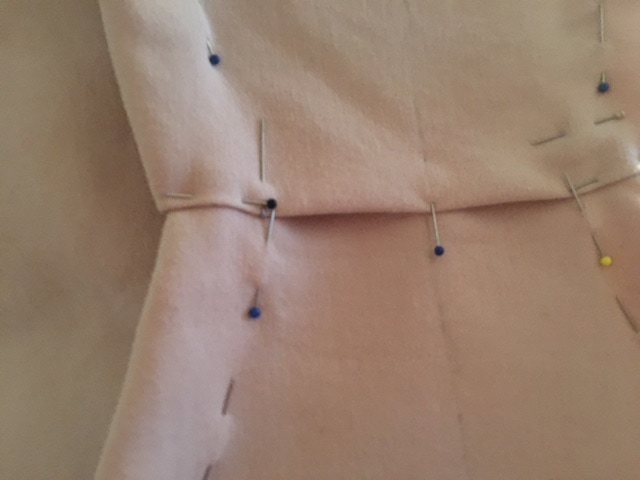
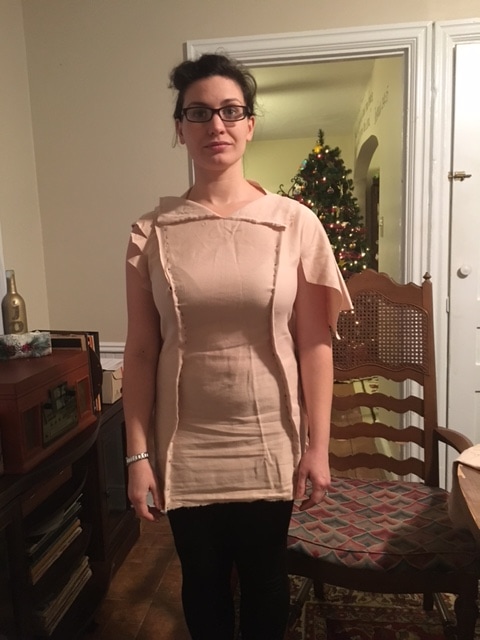
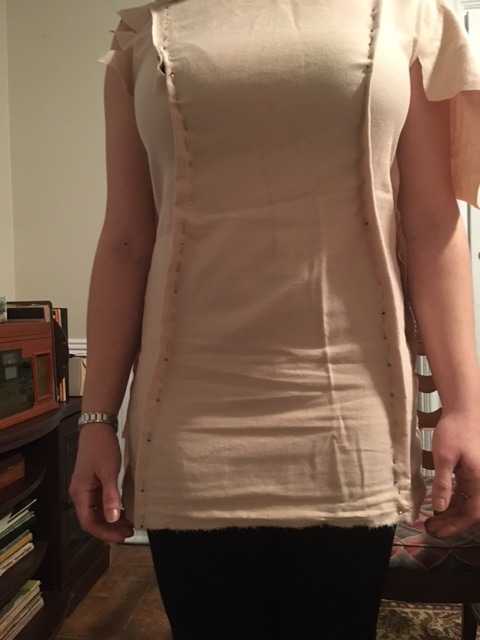

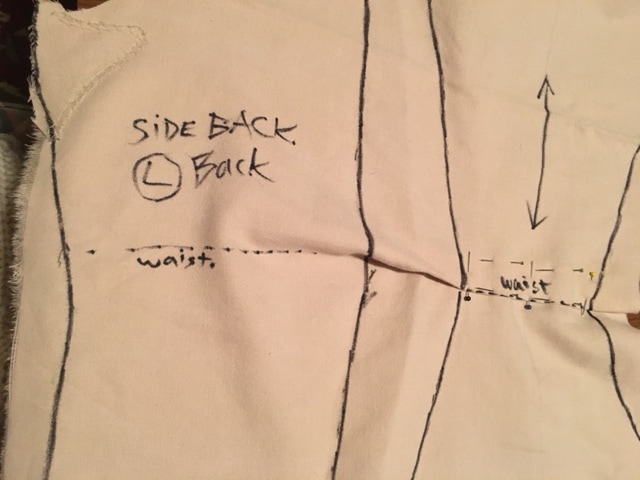
 RSS Feed
RSS Feed